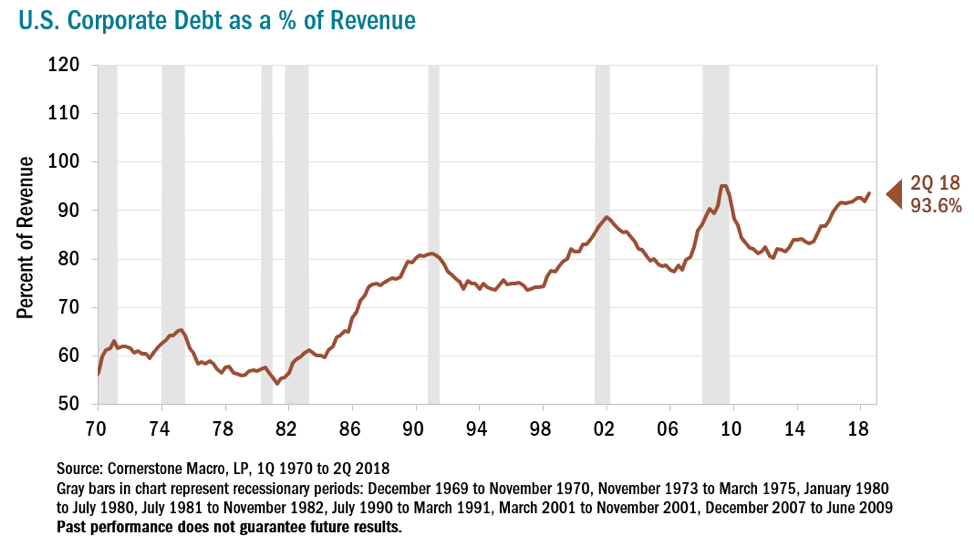This article was written by Bradford A. Evans, CFA – Portfolio Manager.
Fears that profit margins are about as good as they can get for domestic companies has fueled some of the recent selling pressure on Wall Street.
Investors appear to be asking if the top is in on profitability, what will drive growth going forward?
We have been banging that drum for a while and welcome those who are just now contemplating the threat posed by higher input costs.
But despite the concern starting to capture the attention of investors, we believe the potential for damage is still being underestimated. That’s because margins may be reaching an inflection point at a time when corporate debt loads are hitting historic highs.
As the chart below shows, the ratio of corporate debt to revenue is nearing levels last seen during the financial crisis.
If, as expected, margins begin to shrink, debt service costs that have been manageable for businesses operating at peak profitability may suddenly become onerous. The effect could be further amplified by higher borrowing costs in a rising rate environment.
We have long sought to avoid that scenario by seeking companies with strong balance sheets that are poised to see their margins grow due to internally generated improvements. These low-leverage companies, we believe, are also well positioned to reinvest in their businesses and will not have to devote precious financial resources to servicing debt in a rising rate environment.
Heartland Advisors Disclosure: Past performance does not guarantee future results.
Investing involves risk, including the potential loss of principal. There is no guarantee that a particular investment strategy will be successful. Value investments are subject to the risk that their intrinsic value may not be recognized by the broad market.
The statements and opinions expressed in this article are those of the presenter. Any discussion of investments and investment strategies represents the presenter’s views as of the date created and are subject to change without notice. The opinions expressed are for general information only and are not intended to provide specific advice or recommendations for any individual. Any forecasts may not prove to be true. Economic predictions are based on estimates and are subject to change.
Definitions: Leverage: is the amount of debt used to finance a firm’s assets. A firm with significantly more debt than equity is considered to be highly leveraged.
Any opinions expressed herein are solely those of the authors, and do not in any way represent the views or opinions of any other person or entity.







